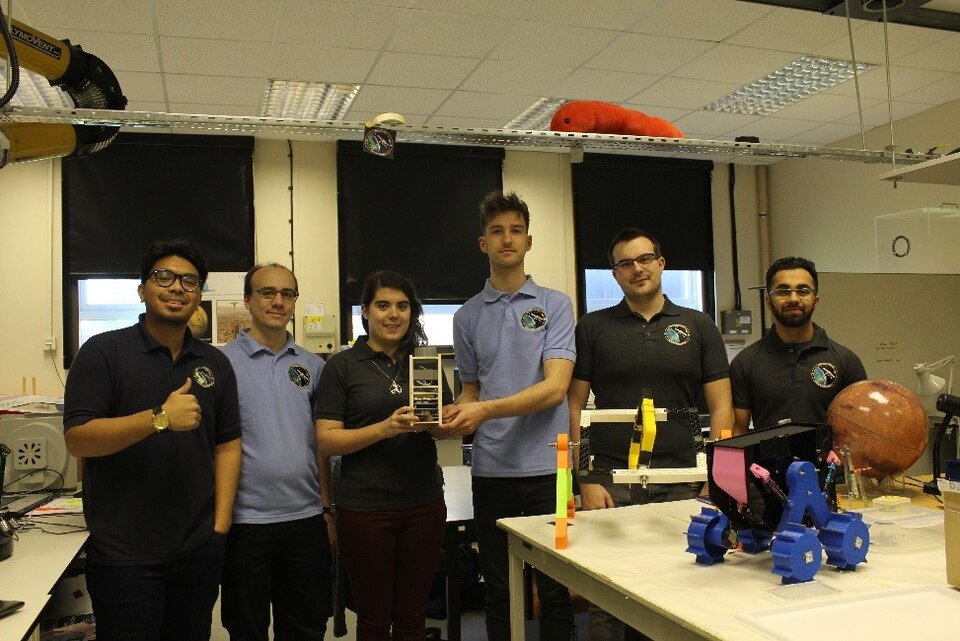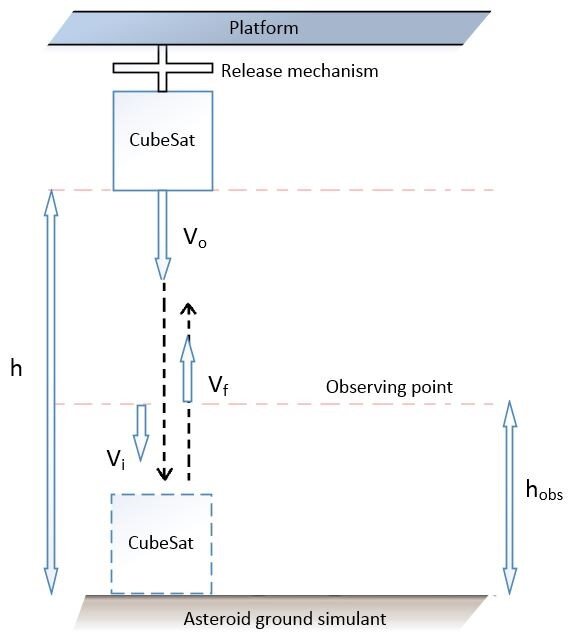Meet the teams: Land3U
The Land3U team consists of one PhD, and five MSc students from Cranfield University’s Astronautics and Space Engineering course.
![]()
![]()
Experiment on Unpowered CubeSat Landing for Asteroids
![]()
![]()
| University | Cranfield University, UK |
| Endorsing professor | Dr. Joan Pau Sanchez Cuartielles |
| Team | Carole Le Blay, Daniyal Ahmad Durrani, Elioenai Sitepu, Florian Gautier, George Kersey, and Stuart Ogborne. |

Their CubeSat microgravity experiment seeks to provide valuable insights into the engineering challenges that must be addressed by future asteroid missions; in particular when attempting to land on the surface of such low-gravity bodies.
The Philae lander (ESA) and Hayabusa missions (JAXA) have shown that landing on a body with an extremely weak gravitational field is a difficult challenge. If insufficient energy is dissipated at touchdown, the vehicle will either fail to reach the intended landing site or, in extreme cases, escape the asteroid altogether. The Land3U experiment will attempt to quantify the energy dissipation during touchdown, and also explain the apparent disagreement between the low energy dissipation measured during touchdowns of Philae and Hayabusa, and the very high energy dissipation measured by previous low-velocity impact experiments in microgravity.

Designed to be highly applicable for future scientific missions to asteroids, Land3U’s experiment consists of a 1U CubeSat mock-up, performing a simulated landing within microgravity conditions. The ZARM Drop tower is ideally suited to simulate this microgravity environment, encountered by small asteroids approximately 100 m diameter.
The 1U CubeSat mock-up structure will mimic a 3U landing (~3 kg) and will be gently pushed with a velocity (Vo) of 100 to 200 mm/s. A release mechanism will initiate the descent towards the asteroid simulant surface. The distance (h) between the CubeSat and the asteroid simulant should be around 200 mm. The velocities before and after the touchdown will be recorded; this will enable calculations such as the ratio of linear momentum loss (the coefficient of restitution, “ε”). These calculated values allow the energy dissipation to be quantified.
Five drops in total will be used for the experiment. The first three will accurately measure “ε” during a preliminary CubeSat landing simulation. The final two will use an additional passive damping mechanism, with the goal to minimise velocity after impact, and therefore obtain a low value for the coefficient of restitution.



